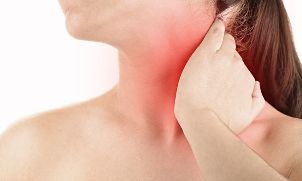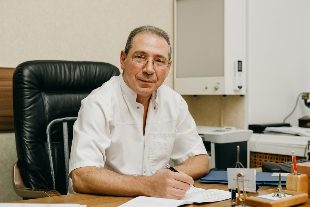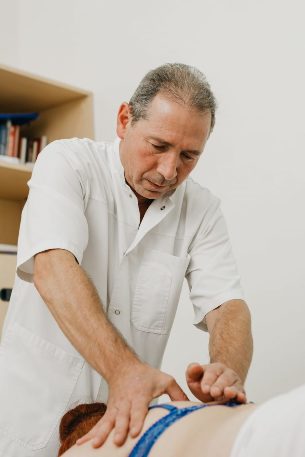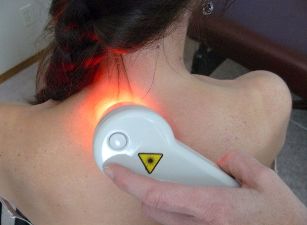Neck pain occurs at 70% of adults at different intervals. At the same time, painful feelings can not only be of a different nature, but can also lead to different diseases. Therefore, it is mainly observed without isolation, but is accompanied by other symptoms that help to make a correct diagnosis and choose the optimal treatment tactics.
Types of neck pain

Neck pain can be either short-lived, limited to minor discomfort, or very severe, significantly interfering with daily life. More often than not, people complain of feeling a sudden lumbago, followed by persistent pain. There may be pain, tingling, throbbing, constriction, or something else.
Neck pain is also called cervical.
Anxiety is generally exacerbated during movements, such as turning or tilting the head, while maintaining a static, especially anxious, position for long periods of time, especially when working on a computer for long periods of time. In this regard, a person is generally unconsciously forced to turn his whole body to loosen his neck as much as possible.
Thus, it is clear that neck pain can be very different. Therefore, they are not only acute (lasting less than 10 days) and chronic, but also divided into:
- vertebrogenic - occurs against the background of pathological changes in the cervical spine, including damage to the intervertebral discs, compression of the spinal cord and spinal cord;
- non-vertebral - infectious diseases, inflammatory processes in the muscles, diseases of the thyroid gland, lymph nodes, etc. caused by all other causes, including.

Vertebrogenic pain is characterized by radiation to the occipital region, shoulders, arms, lower hands, and fingers. Often there is numbness, poor sensitivity and mobility, which indicates the development of neurological diseases, ie a violation of this or that anatomical structure of the nerve roots or spinal cord. In addition, dizziness, seizures, and headaches may occur in such cases, indicating that the vertebral arteries, such as the intervertebral hernia, are constricted.
If the neck pain is severe or accompanied by dizziness, numbness in the back of the head or tinnitus, it is urgent to consult a doctor.
Causes of neck pain
Sometimes it is difficult for patients to differentiate sore throat independently from neck pain because the sensations are blurred and the whole neck appears to be sore. If it is accompanied by a feeling of sweating or scratching in the throat, an increase in body temperature, it may indicate laryngitis, SARS, sore throat, pharyngitis and other colds. Also, this symptomatology is typical for:
- gastroesophageal reflux;
- Itsenko-Cushing syndrome;
- foreign bodies entering the pharynx, such as fish bones;
- hypovitaminosis;
- formation of benign and malignant tumors in the throat.
Again, in most cases, people can distinguish throat problems from real neck pain, which can be observed on both the anterolateral surfaces and the back and front.
Localization of pain is an important diagnostic feature that allows to identify the source of such pain at the stage of examination and then to thoroughly study the changes that occur using instrumental diagnostic methods.
Anterior neck pain: causes
may indicate the formation of unpleasant or even painful sensations in the area directly below the chin, or pain that spreads to the entire front of the neck:
- thyroid disease;
- inflammation of the muscles affecting the ligaments and nerves;
- formation of cysts and abscesses;
- love of lymph nodes;
- angina pectoris.

That is, the list of possible causes is very long, and it is impossible to independently determine exactly what causes neck pain. In such cases, it is worth contacting a therapist for an examination. If necessary, the doctor will refer the patient to a narrow specialist of any profile.
Vertebral artery syndrome and radicular syndrome may also be associated with anterior neck pain. In both cases, the cause is damage to blood vessels or nerves by a deformed intervertebral disc, edematous tissue, a displaced cervical vertebra, or some other structure. Our clinic has developed a unified approach to solving this problem - experienced doctors, neurologists, rehabilitators, endocrinologists will examine and prescribe the necessary treatment.
Back neck pain: causes
Due to the characteristics of the modern lifestyle, people often worry about pain in the back of the neck. Computer work, constant use of devices, low physical activity and bad habits all lead to pathological changes in the spine, which manifest themselves as pain in the neck. Therefore, in the case of painful, throbbing, sharp pains in the back of the neck, lumbago, it is necessary to consult a doctor or vertebrologist in the first place, as this often indicates cervical spine disease:
- Osteochondrosis is a common disease accompanied by degenerative-dystrophic changes in the intervertebral discs, loss of height and loss of strength;
- protrusion - a complication of osteochondrosis, in which the intervertebral disc protrudes (mostly into the spinal canal through which the spinal cord and nerve roots pass);
- Intervertebral hernias are the result of a lack of treatment for a protrusion that causes the internal contents of the intervertebral disc to penetrate the spinal canal, gradually increasing and severely squeezing the nerves and spinal cord, and "walking" along the spinal canal in the final stages of development. and sometimes irreversible complications up to paralysis;
- Spondylosis is a complication of osteochondrosis in which bone protrusions, called osteophytes, grow along the edges of vertebral bodies and the intervertebral discs are critically repaired, resulting in adjacent vertebrae joining together and restricting neck mobility;
- myofascial syndrome - a disease in which individual muscles spasm, causing acute pain attacks during physical activity or pressing on certain points of the neck;
- vertebral compression fractures - most commonly occur in the elderly with osteoporosis or are the result of whiplash injury, such as in an accident and are a serious threat to human life and health;
- Ankylosing spondylitis is a systemic disease that affects almost all joints of the body and causes severe limitations in mobility due to the combination of individual vertebrae that form strong and immobile conglomerates.
Less commonly, low back pain is caused by spinal tuberculosis, osteomyelitis, or Reiter's syndrome.
Lateral neck pain: causes

Often the pain on the side surfaces of the neck is burning or throbbing, and there may be nausea. They tend to lean on the shoulder and ear, sometimes accompanied by the formation of a secondary torticollis, resulting in the head bending to the affected side. This is typical:
- vascular pathologies, including atherosclerosis;
- muscle spasms in the neck that can be caused by a heavy load, sudden movement, or hypothermia;
- Malignant formation in the thyroid gland, esophagus and larynx.
Diagnosis of the causes of neck pain
In most cases, it is worth contacting a chiropractor, vertebrologist or neurologist when neck pain occurs because it leads to the development of cervical spine pathologies. Based on the complaints submitted, examination data and neurological tests, the doctor will be able to determine whether the discomfort in the neck is actually caused by spinal discomfort or other diseases.
However, in fact, one of the reasons for the development of concomitant diseases of the internal organs is an abnormality in the condition of the spine. After all, a change in the condition of the vertebrae, a decrease in the height of the intervertebral discs, and other, even small changes, disrupt the transmission of nerve impulses by the spinal cord along the nerve roots to the internal organs along the nerve.
Because the spinal cord is characterized by segmental innervation, that is, each part is responsible for the proper functioning of a particular organ. Therefore, at first, the work is disrupted, and over time, organic changes occur, that is, the development of this or that disease, which can lead to pain of varying intensity and character in the neck.
For this reason, visceral diseases are rarely diagnosed and no changes are found in the spine, so it is necessary to consult a chiropractor. However, if the patient has symptoms of thyroid, heart, ENT or other diseases, it is indicated that he should consult an additional specialist (endocrinologist, cardiologist, otolaryngologist, etc. ).

Thus, the diagnosis of the causes of neck pain is always complicated. This can include:
- general and biochemical blood test;
- determination of thyroid hormone levels in the blood;
- Ultrasound with dopplerography of cervical vessels, thyroid gland, salivary glands;
- radiography of the cervical spine;
- electron neuromyography;
- CT;
- MRI.
MR, or magnetic resonance imaging, is the most informative way to diagnose spinal pathology. The method allows you to examine the condition of the intervertebral discs down to the smallest detail, assess the quality of blood flow in the vertebral arteries and detect signs of compression in the spinal cord or roots. With its help, the disease is diagnosed in the early stages of development, which ensures that treatment is started as early as possible and is highly effective.
In our clinic you can get more detailed information about the composition of your body and the condition of the vascular system involved in the blood supply to the internal organs, musculoskeletal muscles and brain. . Our experienced doctors will explain the findings to you in detail. Bioimpedansometry calculates the ratio of fat, muscle, bone and skeletal mass, total body fluid, basal metabolism. The intensity of recommended physical activity depends on the condition of the muscle mass. Metabolic processes, in turn, affect the body's ability to recover. According to the indicators of active cell mass, the level of physical activity and nutritional balance can be assessed. This quick and easy test helps us to see and take action on endocrine disorders. In addition, it is very important for us to know the condition of the blood vessels to prevent diseases such as heart attack, hypertension, heart failure, diabetes and more. Angioscan allows you to determine important indicators such as the biological age of the arteries, hardness, stress index (speaking of heart rate), blood oxygen saturation. Such an examination will be useful for men and women over 30 years of age, athletes, those who have undergone long and difficult treatment, as well as anyone who monitors their health.
In this case, the analysis of body composition tells us that adipose tissue predominates in the body and there is a relative deficiency of the bone-muscle component. This information will help the rehabilitator to plan the physical activity correctly, taking into account the individual characteristics of the patient.
Neck Pain Treatment
Therapy tactics for each patient are developed individually based on the diagnosis, the severity of pathological changes, the presence of co-morbidities and other factors. Patients with the same disability may be treated differently because even age and level of physical development affect it.
However, the treatment of diseases that cause neck pain is always complex and involves both symptomatic and etiotropic treatment. In other words, it is aimed at eliminating the symptoms and causes of the disease. The main components of therapy are often:
- drug treatment;
- osteopathy;
- manual treatment;
- massage;
- physiotherapy (phonophoresis, carboxytherapy, ozone therapy, RF current therapy);
- Individual lessons with a rehabilitation doctor.

When diagnosing cervical spine pathology, it is shown that some adjustments have been made to your lifestyle and habits. Thus, office workers, drivers, tailors and other sedentary occupations are advised to warm up as often as possible and to avoid prolonged protection of the forced body position, which requires muscle tension throughout the body.
Eating right is also important for the body to get all the nutrients it needs. This will not only slow down the development of pathology, but also help speed up the regeneration process.
For severe pain, a chiropractor may recommend that the patient receive a neck brace or a Chance collar. Wearing it will help to loosen the cervical spine and help to avoid rash, sudden movements that will gradually fade the pain syndrome. At our center you can choose a dressing that suits you.
To relieve pain before your appointment, you can wrap your neck in a woolen scarf or take an anesthetic pill no later than 12 hours before taking it.
Drug treatment
The nature of the prescribed drugs and their amount can vary over a very wide range, depending on the direct diagnosis and the presence of co-morbidities. Therefore, we list only the groups of drugs that are prescribed to the vast majority of patients:
- NSAIDs are non-steroidal anti-inflammatory drugs that differ in their analgesic properties (produced in various dosage forms, including tablets, ointments, injectable solutions, etc. );
- Corticosteroids are drugs with strong anti-inflammatory effects, they are used only in severe inflammatory processes, which can not be eliminated by NSAIDs;
- muscle relaxant - a drug that relieves muscle spasms of various origins, which helps to reduce the severity of pain;
- chondroprotectors - drugs that form the intervertebral discs, but are effective only in the early stages of osteochondrosis, promoting the regeneration of cartilage tissue;
- B vitamins - used to improve the transmission of bioelectrical impulses from the spinal cord to the relevant organs and restore their proper functioning;
- Vitamin D is a tool responsible for the condition of bone tissue and higher brain functions such as memory, memory, attention, speech.
Patients are also given antibiotics, hormone replacement therapy, hypertensive medications, etc.
Obstruction is used especially for severe neck pain. The procedures involve the injection of corticosteroids and anesthetic solutions into the area where the nerves in the throat pass, which allows the pain to be relieved very quickly. However, in addition to being effective only in pain caused by nerve damage, they require a high level of professionalism from medical professionals, as blocking can lead to nerve damage, infection and serious complications.
Manual therapy
Manual therapy is one of the most effective ways to combat neck pain and its causes, but only if done correctly. Directly affects the spine and surrounding soft tissues. Do not confuse manual treatment with therapeutic massage, which only works the back and neck muscles.

Manual treatment methods and techniques allow you to achieve a significant improvement in well-being and, as a result, complete remission after the first session. To this:
- Restoration of the normal axis of the spine by bringing the vertebrae to an anatomically correct position;
- Increasing the distance between the vertebral bodies and the release of compressed nerves and blood vessels, which helps to eliminate the symptoms of radicular syndrome, improve the functioning of internal organs and especially the brain;
- Eliminate spasms of neck muscles and functional blocks, which improves mobility and reduces the severity of pain;
- Improve blood circulation and tissue nutrition.
We do not have general treatment standards, each patient is treated individually. You only need to rely on a highly qualified specialist to perform manual treatment. Otherwise, the use of inappropriate techniques can only harm the patient, aggravate the problem or lead to the development of complications.
Physiotherapy
Physiotherapy procedures are used to increase the effectiveness of therapy. It is shown only outside the acute period and has analgesic, anti-inflammatory effect, as well as improves microcirculation in soft tissues and helps to normalize muscle tone.
Generally, courses of 8-15 procedures are scheduled. These can be:

- electrophoresis;
- UHF;
- ultrasound therapy;
- laser therapy;
- traction treatment (spinal traction);
- mud baths, etc.
The number of sessions and frequency of physiotherapy procedures are selected by the doctor separately. Some procedures can be combined with each other, while others must be carried out strictly at certain intervals.
exercise therapy
Physiotherapy is one of the mandatory components of conservative therapy for neck pain. It is important to pay due attention to exercise therapy and daily exercise, as it often occurs against the background of muscle tension and degenerative-dystrophic processes in the intervertebral discs caused by it.
A separate physiotherapy exercise program is developed by a rehabilitation physician for each patient. The use of complexes presented on the Internet can be dangerous, because it does not take into account the individual characteristics of the patient, age, degree of indifference to the pathological process and the patient's level of physical fitness. Therefore, you need the help of a specialist to develop an exercise therapy program. In addition, the first few sessions are always under his supervision, so that the patient can understand how to perform each exercise and does not harm himself during independent studies. You should exercise in a quiet environment, avoiding any sudden movements at home, and consult a doctor if you are in pain.
Thus, neck pain is widespread. These can be caused by a variety of diseases, but in most cases, the root of the problem is spinal problems caused by a sedentary lifestyle. Therefore, you should not hesitate to consult a doctor. Indeed, in the early stages of the disease, it can be easily solved by conservative methods. In advanced cases, neck pain and its causes can be eliminated by surgery alone.

























